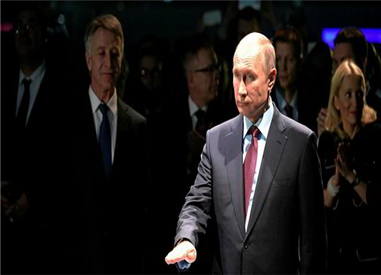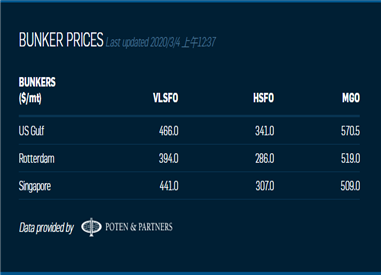 'Fantastic' turn for tanker owners as Opec+ deal collapses
'Fantastic' turn for tanker owners as Opec+ deal collapses
In a surprising development, 24 of the world’s largest oil producers are to pump at will from April, potentially leading to lower bunker costs and floating storage opportunities
The supply cut agreement between Opec and its Russia-led allies collapsed on Friday in a surprising turn of events that analysts said would support tanker earnings in the months to come.
Crude futures plunged to their lowest level since July 2017 as 24 of the world’s largest oil producers, also known as Opec+, failed to reach any deal. This is expected to result in lower bunker costs and more floating storage opportunities for shipowners.
“[It] will be fantastic for tankers,” BRS head of research Andrew Wilson told TradeWinds.
After two days of meetings in Vienna, Opec+ failed to agree on an additional nine-month supply cut of 1.5m barrels per day (bpd) from April due to strong resistance from Russia.
This means the group’s existing 1.7m-bpd supply cut, which would have been automatically rolled over till year-end, will expire on 31 March as currently scheduled.
“Given today’s decision, all Opec+ countries from April 1 have no obligations to cut output,” Russian energy minister Alexander Novak told reporters when leaving the Opec building in Vienna.
Oversupply fears triggered a large sell-off in oil markets, where the front-month Brent crude futures fell by nearly 10% to $45.2 per barrel before a small recovery.
“We'd be down to a $30 Brent, and that would be enough to put the market into contango,” Wilson said.
“We wouldn't necessarily see more oil being exported, but we'd see be more oil going into floating storage.”
In a contango market, where forward oil prices are higher than prompt oil, trading houses often charter tankers to store crude and vessels tend to sail at slow speeds in laden legs. Both can support vessel earnings.
Demand weakness
The latest Opec+ meeting was held against the background of demand worries, with the coronavirus epidemic hampering oil consumption in China, the world’s largest seaborne crude buyer.
Bloomberg’s shipping data suggested China’s crude imports fell 13% month-on-month to 8.3m bpd in February, the lowest in 14 months.
Market players had widely expected the Opec+ to reach a supply cut, as the Covid-19 epidemic has spread from China to Europe, Americas and the Middle East.
“What began as a supply‐side hit on China’s economy in February could now cripple services and the global economy’s demand‐side...and travel, tourism and consumer spending,” pricing agency Argus Media’s chief economist David Fyfe said.
According to Rystad Energy, global oil demand will only grow by 500,000 bpd in 2020, compared to the consultancy’s pre-Covid19 forecast of 1.1m bpd.
“This is assuming that the Covid-19 epidemic will largely be contained by the end of June,” Rystad said in a research note.
Wilson compared the collapse of Opec+ talks to Saudi Arabia’s refusal for a production cut in late-2014, which resulted in higher crude exports from Opec members in the following quarters.
Subsequently, 2015 turned out to be one of the best years for crude tankers in the past decade.
According to the Baltic Exchange, spot VLCC earnings on the benchmark Middle East Gulf-Japan route averaged $67,800 per day that year. Suezmax earnings averaged $44,900 per day and aframax averaged $37,000 per day.
Wilson cautioned that oil producers may not hike exports significantly, though, if demand-side weakness persisted.
“If there isn't the demand for the oil, then I don't think…Saudis would really be willing to [increase] supply,” Wilson added.
Today's Bunker Prices:




